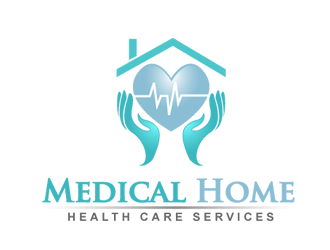
A plebotomist is someone who draws blood from patients. These professionals need to be able to insert needles into veins and are not afraid of blood. Phlebotomists often work with other medical practitioners to draw blood and make referrals. If you are interested in learning how to become a phlebotomist, read on to discover the steps you need to take.
Get a high school diploma
You can get your high-school diploma and become a Phenomenologist in a variety of ways. Getting a diploma from an accredited school will help you start your career quickly, but you'll still need some education. Employers are more likely to hire phlebotomists that have certification.
The baby boomer generation will continue to grow, and more people will require blood draws. This will lead to a greater demand for phlebotomists. The career field is expected to grow by around 28 percent between 2022 and 2022. This is great news for people who are looking for a steady job with high upward mobility. While a phlebotomist's hours are typically long, they enjoy good work-life balance.

Earning a certification in phlebotomy
The best way to get work in healthcare is to become a certified phlebotonist. The profession is growing in popularity, especially in the United States. The ideal candidate should be at least 18 years old and have graduated from high school. The course includes a background screening, drug screening, as well as a health assessment. The course costs more that $3,000. Some colleges offer entry level skills for phlebotomists such as the ability to draw blood for the first-time.
The American Society for Clinical Pathology offers 3 phlebotomy certificates. To become a certified phlebotomist you will need a high-school diploma. A phlebotomy license is required of those who have a medical degree. Additional coursework may also be required. Additionally, certification requires one year of clinical experience in a medical laboratory.
You can begin a career as an ophthalmist within a year
A phlebotomy course teaches you how to collect and analyze blood. Students will learn basic medical science as well as patient interaction strategies. Studying for a phlebotomy Certificate program takes around one-year. Some programs last eight weeks. One year of training can lead to a job within six months.
There are several programs available online that are geared towards phlebotomy certification. The program may take from four to eight weeks to complete. Most programs require 100 hours to complete. You may choose to work in a hospital or volunteer at a medical lab. To be certified after the course is completed, you will need a certification exam.

How to obtain a phlebotomy permit
You might consider becoming a phlebotomist if you are looking for a job in healthcare. This career is becoming more common in health care facilities like hospitals, doctor's practices, and cancer centers. Be aware of these factors before you start your training in phlebotomy. The first is to determine where you will find employment. You can use job sites and personal networks to find available positions. You should also ensure that your resume is updated with current certifications.
The next step is to get your phlebotomy certification. While not mandatory in every state it is, this certification will help you to get a job. After passing the exam you will need to take nine continuing education courses every three years. These credits aren't usually required but can be helpful. However, if you are planning to work in the medical field, getting a phlebotomy license will help you get ahead in this field.
FAQ
What does "public" mean in public health?
Public Health is about protecting and improving the health in the community. It includes preventing disease, injury and disability, encouraging good health practices, providing adequate nutrition, and controlling communicable diseases and environmental hazards.
What are the differences between these three types of healthcare system?
The first system, which is traditional and where patients are not allowed to choose who they see for their treatment, is the most popular. They will go to hospital B if they have an emergency, but they won't bother if there is nothing else.
The second system is a fee per service system. Doctors earn money depending on the number of tests, operations, or drugs they perform. If they aren't paid enough, they won’t do extra work for you, and you’ll pay twice as.
The third system is a capitation system which pays doctors according to what they actually spend on care rather than by how many procedures they perform. This encourages doctors and patients to choose less costly treatment options such as talk therapies over surgery.
What would happen if Medicare was not available?
Americans will become more uninsured. Some employers will drop their employees from their plans. In addition, many seniors will face higher out-of-pocket costs for prescription drugs and other medical services.
How can I get free health insurance in my area?
If you meet the eligibility requirements, you may be eligible for free insurance. You may be eligible for Medicaid or Medicare, CHIP. Children's Health Insurance Program, (CHIP), Tricare. VA benefits. Federal Employee Health Benefits. (FEHB). Military health plans. Indian Health Service (IHS).
What does it mean to "health promote"?
Health promotion means helping people to stay well and live longer. It focuses more on preventing disease than treating it.
It covers activities such:
-
Right eating
-
getting enough sleep
-
exercising regularly
-
staying active and fit
-
It is important to not smoke
-
managing stress
-
Keeping up to date with vaccinations
-
Avoiding alcohol abuse
-
Regular screenings and checkups
-
Understanding how to cope with chronic diseases.
What are medical networks?
Medical systems have been designed to improve the quality of life and make it easier for patients to live longer and better lives. They ensure patients receive the best medical care, when and where they need it.
They make sure that the right treatment is provided at the right time. They give doctors the information they need to provide the best advice for each patient.
Statistics
- Over the first twenty-five years of this transformation, government contributions to healthcare expenditures have dropped from 36% to 15%, with the burden of managing this decrease falling largely on patients. (en.wikipedia.org)
- Foreign investment in hospitals—up to 70% ownership- has been encouraged as an incentive for privatization. (en.wikipedia.org)
- The health share of the Gross domestic product (GDP) is expected to continue its upward trend, reaching 19.9 percent of GDP by 2025. (en.wikipedia.org)
- For the most part, that's true—over 80 percent of patients are over the age of 65. (rasmussen.edu)
- Price Increases, Aging Push Sector To 20 Percent Of Economy". (en.wikipedia.org)
External Links
How To
What are the Four Health Systems?
The healthcare system is a complex network of organizations such as hospitals, clinics, pharmaceutical companies, insurance providers, government agencies, public health officials, and many others.
The overall goal of this project was to create an infographic for people who want to understand what makes up the US health care system.
Here are some key points.
-
Annual healthcare spending amounts to $2 trillion, or 17% of GDP. This is nearly twice the amount of the entire defense spending budget.
-
Medical inflation reached 6.6% for 2015, more than any other category.
-
On average, Americans spend 9% of their income on health costs.
-
In 2014, over 300 million Americans were uninsured.
-
Although the Affordable Care act (ACA) was signed into law, its implementation is still not complete. There are still large gaps in coverage.
-
A majority of Americans believe the ACA should be maintained.
-
The US spends a lot more money on healthcare than any other countries in the world.
-
Affordable healthcare would mean that every American has access to it. The annual cost would be $2.8 trillion.
-
Medicare, Medicaid and private insurers pay 56% of healthcare expenses.
-
The top three reasons people aren't getting insured include not being financially able ($25 billion), having too much time to look for insurance ($16.4 trillion), and not knowing what it is ($14.7 billion).
-
There are two types: HMO (health maintenance organisation) and PPO [preferred provider organization].
-
Private insurance covers many services, including doctors and dentists, prescriptions, and physical therapy.
-
The public programs include hospitalization, outpatient surgery and nursing homes. They also cover long-term care and hospice care.
-
Medicare is a federal program that provides senior citizens with health coverage. It pays for hospital stays and skilled nursing facility stays.
-
Medicaid is a joint federal-state program that provides financial assistance for low-income individuals or families who earn too little to qualify for other benefits.